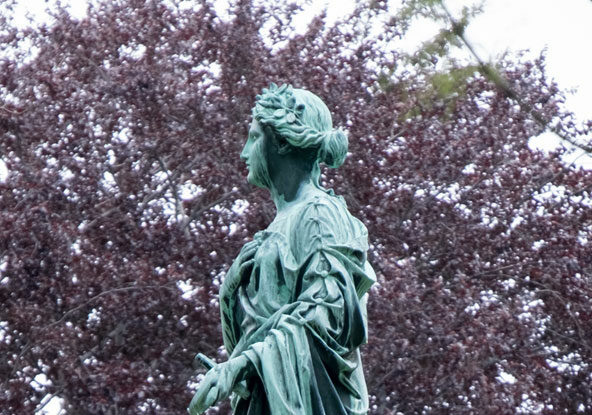The bronze figure atop the Jewell Monument holds an anchor, a Christian symbol of hope possibly alluding to Hebrews: 6:19: “We have this hope as an anchor for the soul, firm and secure.”
The statue is the work of German-born artist Carl Conrads, a graduate of the Academy of Fine Arts in Munich. Conrads joined James Batterson’s monument company in Hartford as it prepared for the post-Civil War demand for cemetery and other monuments. He served as Batterson’s house sculptor from 1866 to 1903.
The Statue of Hope marks the lot of Pliny Jewell, Sr. and his heirs. Pliny moved to Hartford from New Hampshire in 1845. He operated a tannery and leather shop in the capital city. His greatest contribution to the manufacturing world was introducing leather belting as a mechanism for conveying power in place of costly and cumbersome gearing systems.
As his business expanded, four of his five sons joined him in the company that became known as P. Jewell & Sons. His son Marshall took over the business in 1850 and the company amassed substantial wealth during the Civil War.
In the 1860s, Marshall turned to making his mark as a Republican politician. He served as governor before being appointed Minister to Russia by President Grant in 1873. He resigned from the position after only seven months. He then served as Postmaster General from 1874 until 1876.
Marshall served as a vice-presidential candidate in the 1876 and 1880 Republican National Conventions but lost to William A. Wheeler and Chester A. Arthur, respectively.
From 1880 until his death in 1883, Marshall served as the Chairman of the Republican National Committee.

